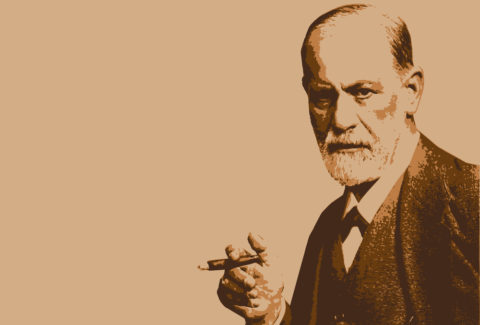The Power of Psychodynamic Formulation in Understanding the Human Psyche

The Power of Psychodynamic Formulation in Understanding the Human Psyche
Introduction:
In the realm of psychology, the human mind remains a labyrinth of intricacies, hidden motives, and subconscious drives. Amidst this complexity, psychodynamic formulation emerges as a beacon of understanding, offering profound insights into the depths of the human psyche. Rooted in the principles of psychoanalytic theory, psychodynamic formulation delves beyond surface-level symptoms to unveil the underlying dynamics shaping thoughts, emotions, and behaviors. In this article, we explore the transformative power of psychodynamic formulation in unraveling the mysteries of the human mind.
Understanding Psychodynamic Formulation:
Psychodynamic formulation[1] is a comprehensive framework that seeks to understand individuals within the context of their unique life experiences, unconscious conflicts, and relational patterns. Drawing from psychoanalytic principles, it examines the interplay between conscious and unconscious processes, childhood experiences, defense mechanisms, and interpersonal dynamics. Rather than focusing solely on symptom reduction, psychodynamic formulation aims to unearth the underlying causes of psychological distress, paving the way for profound insights, healing, and growth.
Key Components of Psychodynamic Formulation:
- Early Experiences: Psychodynamic formulation explores the impact of early childhood experiences, attachment patterns, and family dynamics on the development of personality structure and relational patterns. Childhood traumas, unresolved conflicts, and unmet emotional needs can shape individuals’ perceptions, beliefs, and coping mechanisms throughout their lives.[2]
- Unconscious Processes: Central to psychodynamic formulation is the recognition of unconscious processes, drives, and conflicts that influence thoughts, feelings, and behaviors.[3] Freudian concepts such as repression, projection, and defense mechanisms shed light on how individuals navigate inner conflicts and regulate anxiety.
- Defense Mechanisms: Psychodynamic formulation examines the various defense mechanisms individuals employ to cope with internal and external stressors, protect against threatening emotions, and maintain psychological equilibrium. Awareness of defense mechanisms[4] enables individuals to explore underlying emotions and vulnerabilities with greater insight and compassion.
- Transference and Countertransference: Within the therapeutic relationship, psychodynamic formulation explores the phenomena of transference and countertransference[5], wherein unconscious feelings and dynamics from past relationships are unconsciously projected onto the therapist and vice versa. Understanding these dynamics illuminates underlying relational patterns, facilitating deeper self-awareness and therapeutic growth.
- Relational Patterns: Psychodynamic formulation attends to recurrent relational patterns[6] and interpersonal dynamics that manifest in individuals’ relationships and interactions. By examining themes of dependency, aggression, intimacy, and control, individuals can gain insight into underlying relational needs, attachment styles, and patterns of relating.
- Symbolism and Meaning: Psychodynamic formulation recognizes the symbolic nature of psychological symptoms, dreams, and unconscious fantasies as reflections of deeper meanings and conflicts. Exploring the symbolic language of the unconscious unveils hidden truths, desires, and fears, fostering greater self-understanding and integration.[7]
Applications of Psychodynamic Formulation:
- Psychotherapy: Psychodynamic formulation serves as a guiding framework in psychotherapy, informing treatment interventions, facilitating therapeutic rapport, and promoting deeper exploration of unconscious conflicts and relational dynamics.
- Case Formulation: In clinical settings, psychodynamic formulation informs case conceptualization and treatment planning, guiding clinicians in understanding the complexity of clients’ presentations and tailoring interventions to address underlying dynamics.
- Personal Growth: Beyond clinical applications, psychodynamic formulation offers individuals a pathway to personal growth, self-discovery, and relational healing. By exploring unconscious patterns and conflicts, individuals can cultivate greater self-awareness, resilience, and authenticity in their lives.
Conclusion:
In the tapestry of human experience, psychodynamic formulation stands as a profound tool for understanding the intricacies of the human psyche. By delving beneath surface-level symptoms to explore unconscious processes, early experiences, and relational dynamics, psychodynamic formulation illuminates the depths of the human mind with compassion, insight, and transformative potential. Whether in the therapeutic setting or in personal exploration, embracing the principles of psychodynamic formulation invites individuals to embark on a journey of self-discovery, healing, and growth, unlocking the mysteries of the psyche with courage and curiosity.
Are you interested in delving deeper into Psychodynamic Psychotherapy? If so, discover whether our upcoming 6-week Psychodynamic Psychotherapy Certificate Course, commencing on May 7, 2024, is the right fit for you. Click here to learn more.
[1] Cabaniss, Deborah L., et al. Psychodynamic formulation. John Wiley & Sons, 2013.
[2] Leiper, Rob. “Psychodynamic formulation: Looking beneath the surface.” Formulation in Psychology and Psychotherapy. Routledge, 2013. 45-66.
[3] Shevrin, Howard, ed. Conscious and unconscious processes: Psychodynamic, cognitive, and neurophysiological convergences. Guilford Press, 1996.
[4] Eells, Tracy D., and Kenneth G. Lombart. “Case formulation: Determining the focus in brief dynamic psychotherapy.” Core processes in brief psychodynamic psychotherapy. Routledge, 2003. 135-160.
[5] Sant, Marta. We Call it Countertransference, But What is it That We’re Really Talking About? An Interpretative Phenomenological Analysis of Psychodynamic Supervisors’ Experiences of Countertransference in Supervision. Diss. University of Surrey (United Kingdom), 2012.
[6] Tebbutt, Hayley. “Psychodynamic Case Formulations.” (2012).
[7] Fleming, Robert. “A clinical guide to psychodynamic psychotherapy: by Deborah Abrahams and Poul Rohleder, London, Routledge, 2021, 340 pp.,£ 29.99 (paperback), ISBN 978-0-815-35266-2.” (2021): 491-495.








